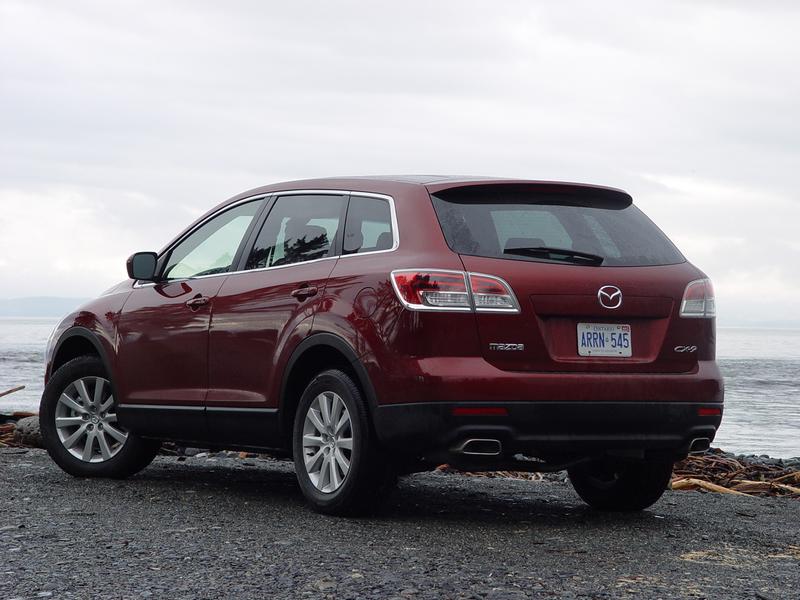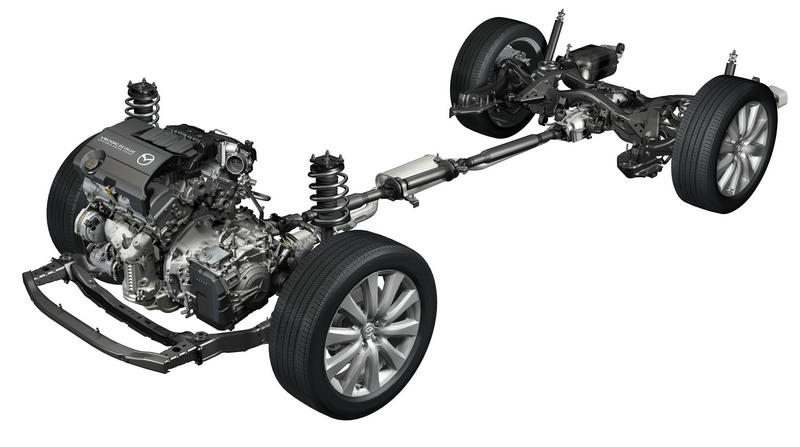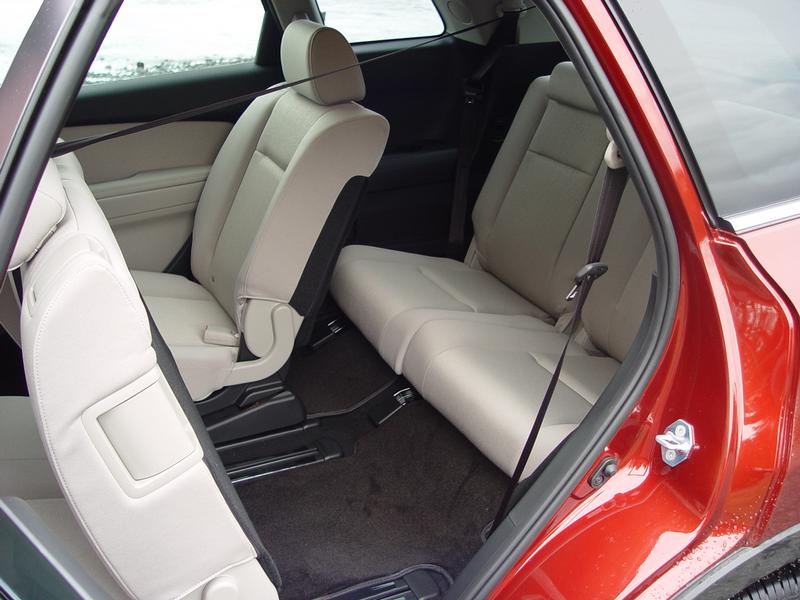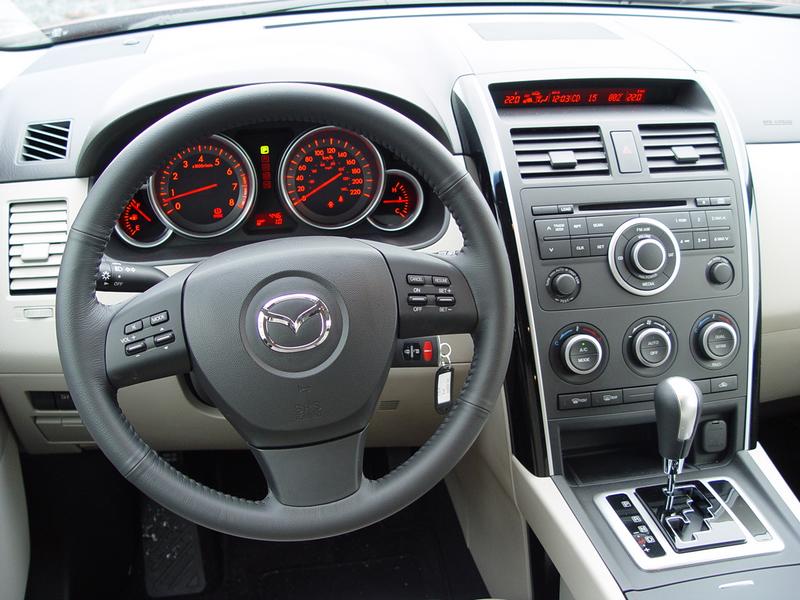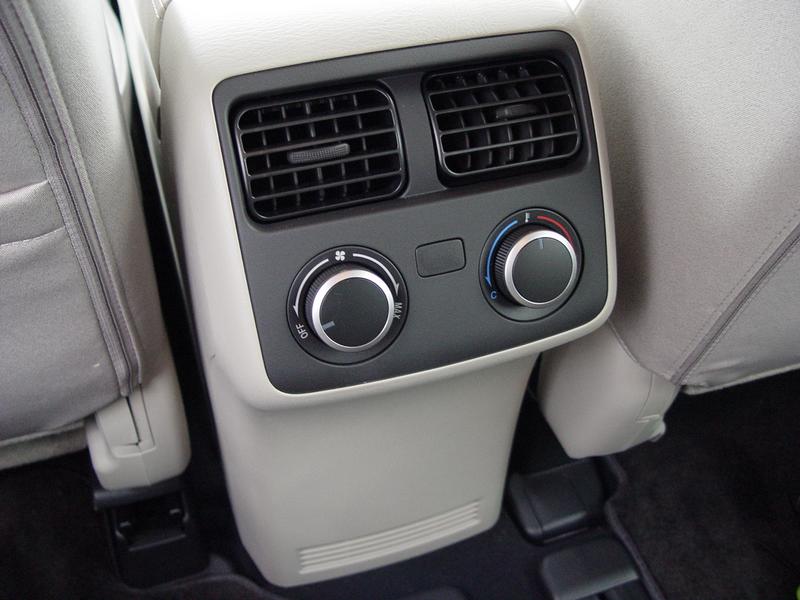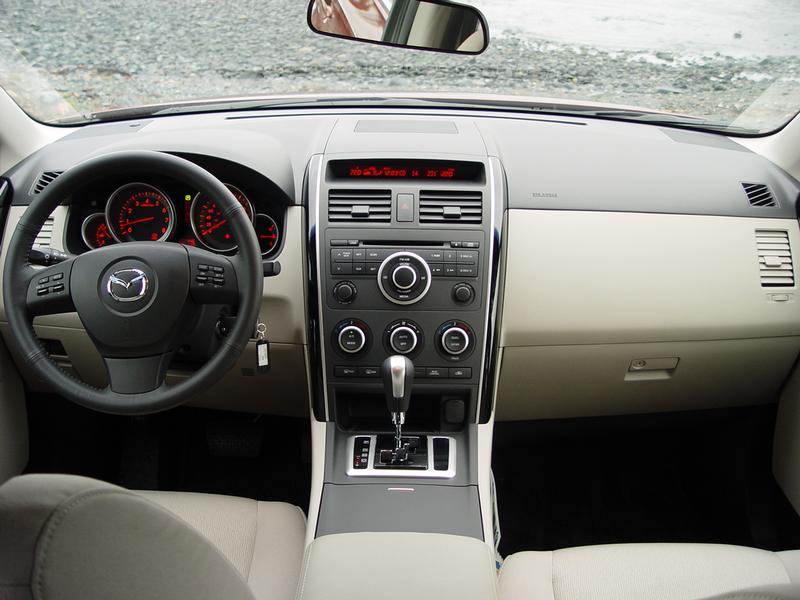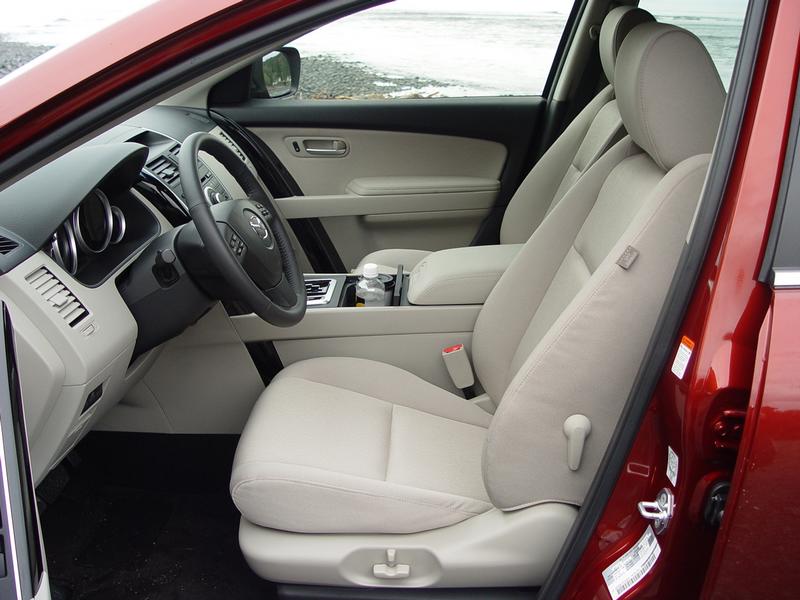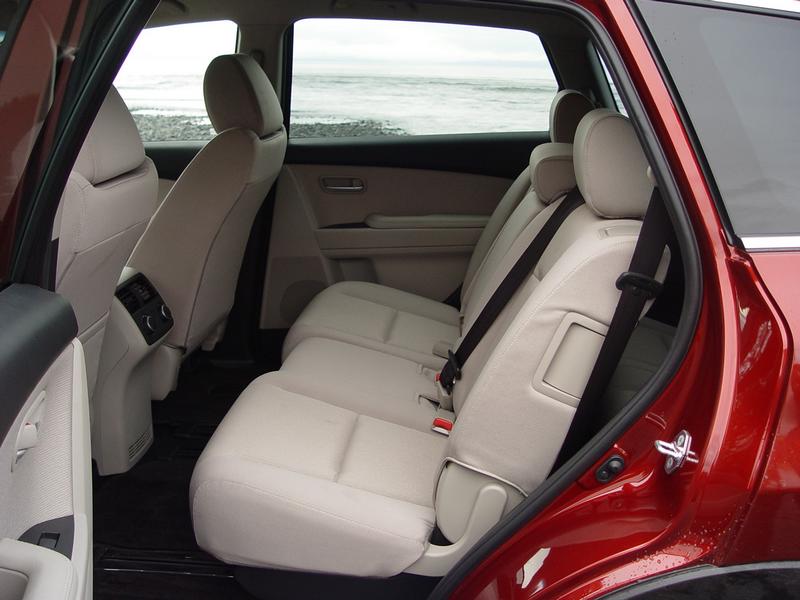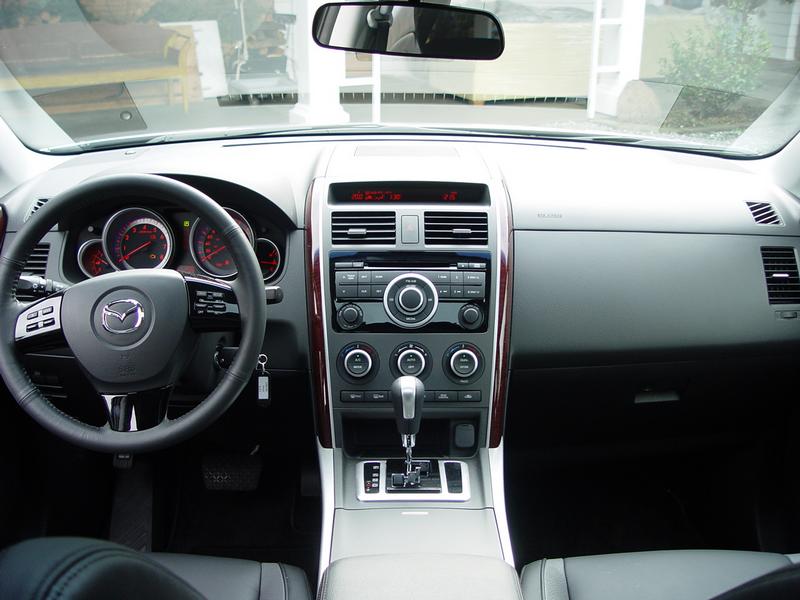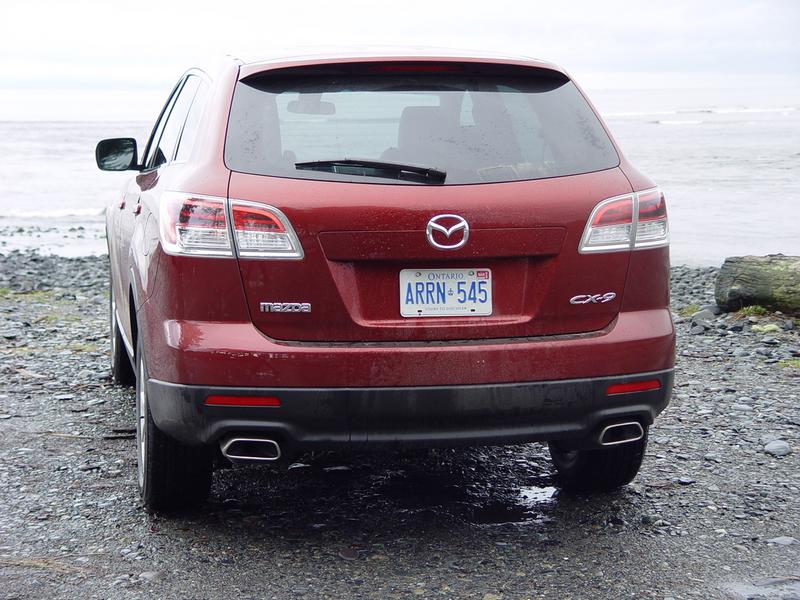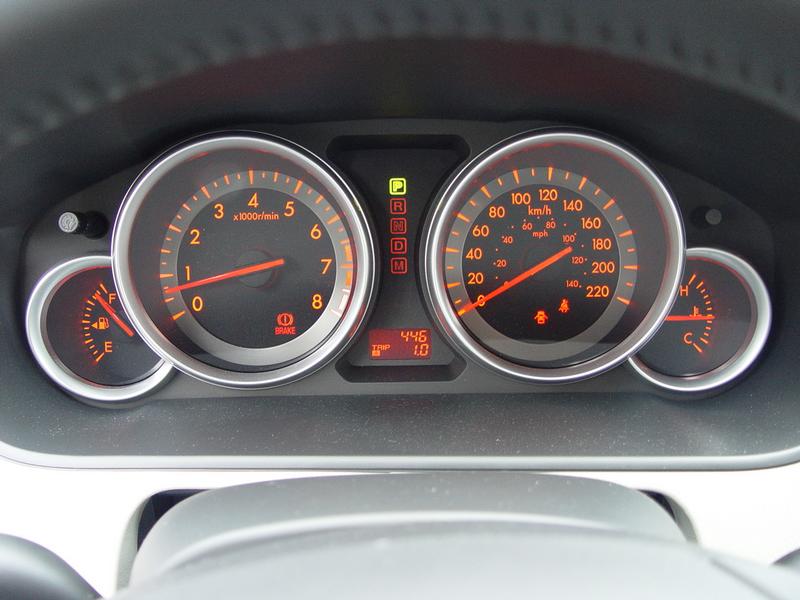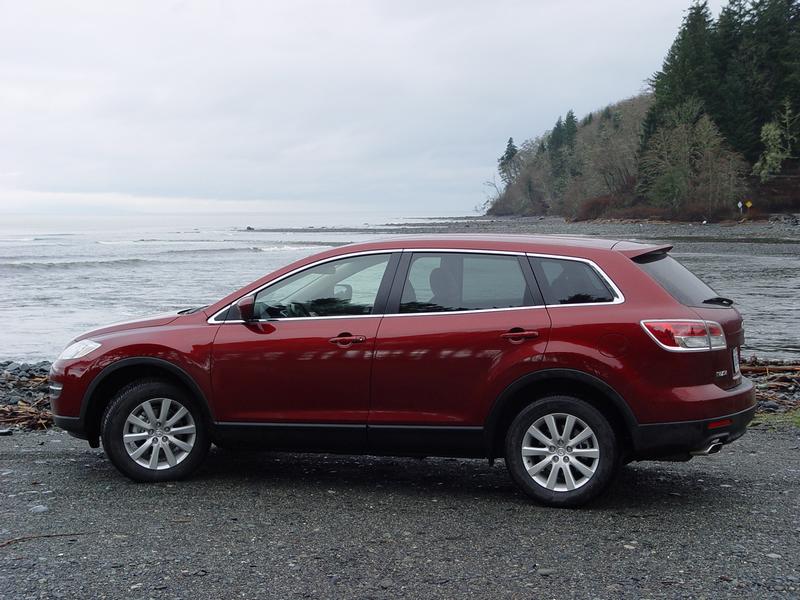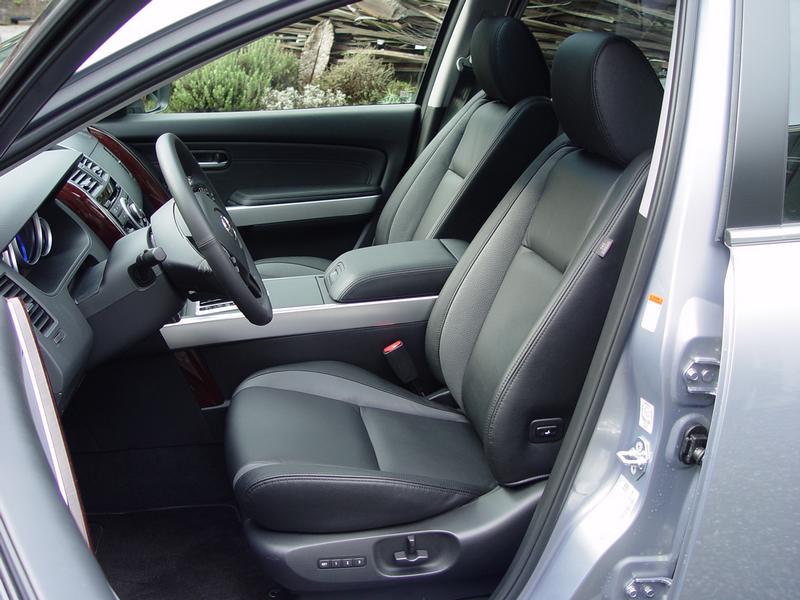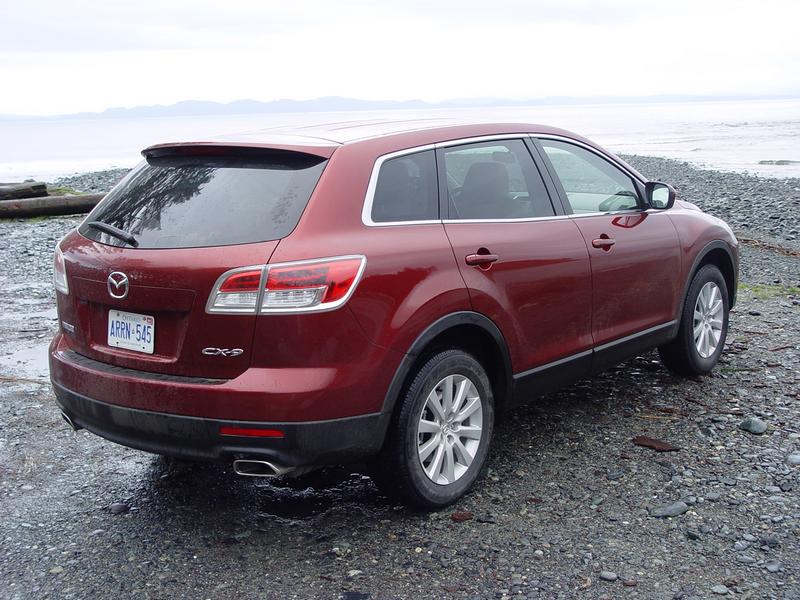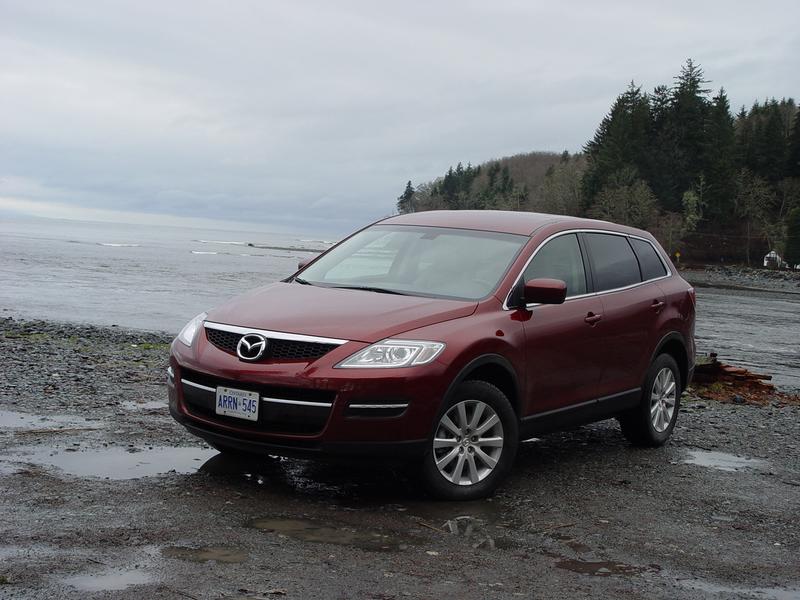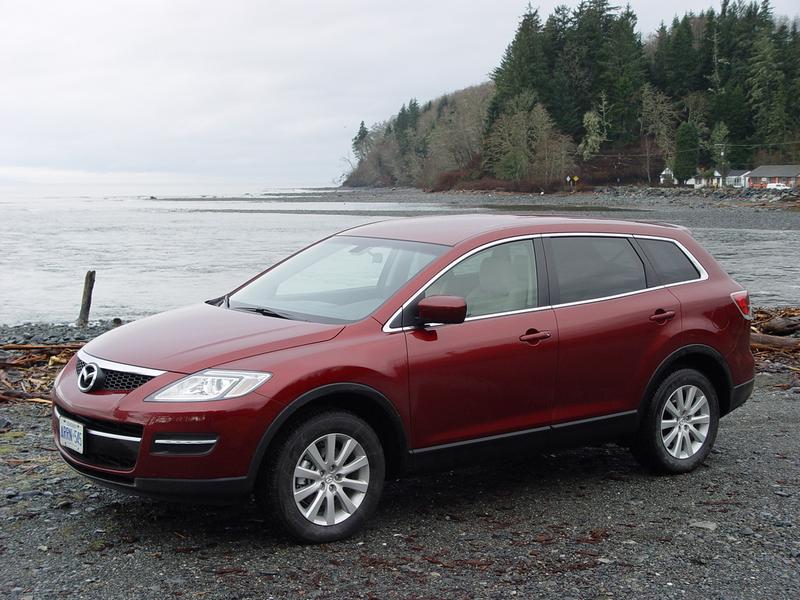
Victoria, British Columbia - At a time when the popularity of mid-sized SUVs is flagging, it might seem like a bad idea to introduce a new seven-passenger, sport-utility vehicle. However, according to Mazda Canada's Public Relations Manager Greg Young, it is a good time to introduce a mid-size "crossover utility vehicle" like the all-new Mazda CX-9. While traditional large and mid-sized truck-based SUVs have seen a decline in sales recently, sales of mid-size car-based crossovers are on the upswing, he says.
The reason for this is that in addition to being roomy with lots of cargo space, crossovers tend to be more car-like in the way they drive, particularly when it comes to ride and handling. Their car-like unit body construction is often lighter than truck-like body-on-frame designs, enabling them to offer better fuel economy. And crossovers tend to be more stylish and less 'truck-ish' than SUVs.
On the downside, crossover vehicles typically don't offer a "low-range" gear for serious off-road duty, and can't tow heavy trailers, but these concerns aren't as important to the typical urban/suburban crossover customer.
The all-new 2007 Mazda CX-9 follows the smaller Mazda CX-7 CUV that was introduced last year, and like the CX-7, it has a very sporty profile with a steeply raked windscreen, a clean, aerodynamic nose, muscular fenders, and a wide stance. The new CX-9 is arguably the best-looking crossover in its class, a segment which includes the Toyota Highlander, Honda Pilot, Nissan Murano, Volkswagen Touareg, Subaru B9 Tribeca, Mitsubishi Endeavor, and the upcoming Hyundai Veracruz - and from the domestic automakers, the new Ford Edge, GMC Acadia, and Saturn Outlook.
Though it's based on a platform similar to the new Ford Edge, the CX-9 is built in Japan and the only parts it shares with the Edge are the Ford-built 263-hp 3.5-litre V6 engine, and a fully independent Mazda6-derived suspension. Both vehicles have a six-speed automatic transmission, but the CX-9's is different, built by Aisin.
Front-wheel drive is standard on both CX-9 trim levels, GS and GT. The optional all-wheel drive system is an on-demand system that normally operates in front-wheel drive, but sends up to 50% of the power to the rear wheels when needed. This system was originally developed for the Mazdaspeed6 performance sedan - it automatically adjusts to changing traction by monitoring wheel slippage, steering angle, yaw rate, lateral acceleration, and available driveline torque.
All CX-9s also include a standard Traction Control System (TCS) that automatically reduces torque when the wheels slip to help restore traction; and Dynamic Stability Control (DSC) that automatically applies one or more brakes to minimize understeer or oversteer. In addition, all CX-9s include standard Roll Stability Control (RSC) that uses body-roll sensors and wheel speed sensors to decide when to decrease the throttle and apply the brakes to avert a roll-over.
The standard tires on the CX-9 GS are P245/60R18-inch all season tires, while GT models get standard P245/50R20-inch all-seasons.
All CX-9's have three rows of seats with a total of seven seats: there are no five-passenger CX-9s. Its seven-passenger capacity is a key selling feature, says Mazda's Greg Young. "The Mazda CX-9 targets young couples and modern families who have not lost their desire for high-intensity leisure activities," he says. "It is also ideal for couples with grown children who pursue an active lifestyle."
Pricing and equipment
Starting at $39,595, the 2007 CX-9 GS is equipped with front and rear air conditioning with a three-zone temperature control; front, side and curtain airbags; eight-way power driver's seat with manual lumbar adjustment; 60/40 split folding second row seats; 50/50 split folding third row seats; tilt & telescopic steering wheel; AM/FM/CD player with six speakers; power windows; power door locks with remote keyless entry; cruise control; and rain sensing windshield wipers.
Available options on the GS include all-wheel drive ($2,000) and a power moonroof with a one-touch open and close feature ($1,000).
To the list of standard equipment on the GS, the $43,955 GT adds 20-inch tires and alloys, xenon headlights, fog lights, leather seats with seat heaters and power lumbar adjustment, memory settings for the driver's seat, four-way power passenger seat, woodgrain dash trim, additional blue floor lighting, and turn signals on the outside mirrors.
Options on the GT include a 'Luxury Package' ($1,495) with an in-dash six-disc CD changer, premium Bose audio system with 10-speakers, keyless entry & start, and power tailgate. A 'Navigation Package' ($3,235) (requires Luxury Package) includes a voice activated navigation system with MP3 capability, rear-view camera and Bluetooth phone compatibility. An optional 'Rear Entertainment System' ($2,480) (requires Luxury and Navigation Packages) includes a Bose 5.1 channel surround sound system with 11-speakers, CD/DVD player with audio input jack, nine-inch monitor, wireless headphones and an 115V power outlet.
Interior impressions
I drove both GS and GT models, but apart from the different interior materials and options, there's very little difference between the two vehicles. The standard cloth seat fabric in the GS is attractive and durable, but I wouldn't recommend the cream coloured fabric in my GS tester - it will get dirty very quickly. Thankfully, my GS had black carpets in the footwells. The two-tone leather seats in the GT are very attractive and comfortable and include standard seat heaters in the front. Unfortunately, the GS' cloth front seats aren't available with heaters.
Interior room in the CX-9 is above average in the mid-size crossover class. Mazda claims the CX-9 has more legroom in the second and third rows than the Toyota Highlander and Honda Pilot. I found plenty of legroom and headroom in the first and second rows, and adequate headroom and legroom in the third row for my 5' 9" frame.
Getting in to the third row is not as difficult as in some of its competitors: the rear doors open a full 70 degrees, and a handle on the side of the second seat allows the second seatback to fold down and the seat to slide forwards simultaneously. In addition, the second row seats slide 12 cm fore and aft to increase legroom for third row passengers.
Even with the third row seats up, there is 487 litres (17.2 cu. ft.) of cargo space behind the third row seats. Golfers take note: the side walls have been hollowed out to allow two golf bags to fit sideways across the trunk. Both second and third row seatbacks fold down easily without having to remove the head restraints, providing a flat, lined loading surface and a total of 2851 litres (100.7 cu. ft.) of cargo space. That's more than in the Honda Pilot or Toyota Highlander. Behind the third row seat, the CX-9's cargo floor is 46 cm (18 in.) long at the floor; with the third row seatbacks folded, the cargo length increases to 91 cm (3 ft.); and with the second row seatback, the cargo floor is 183 cm (6 ft.) long.
The quality of the dash and seating materials is very good, with a classy blend of textured plastic and metal-look trim on the instrument panel. Like other Mazda's, the CX-9 features instruments and controls backlit in red, something I'm not fond of because I find it too aggressive and hard to read. And like other Mazdas, the CX-9 has a display at the top of the dash for the heating and ventilation readouts and radio/CD functions while the actual controls are located further down on the control panel - this takes a while to get used to too.
For storage, there's an open slot at the bottom of the centre stack with a 12-volt outlet, and between the front seats is a deep storage bin with a 12-volt outlet and an auxiliary i-Pod jack. First, second and third row passengers have cupholders. And under the cargo floor is a hidden storage area for valuables or items that you don't want to roll around the trunk.
Driving impressions
For this first test drive, Assistant Editor Jil McIntosh and I teamed up to drive the winding backroads and highways west of Victoria, B.C., out to the Jordan River on the west coast of Vancouver Island, "Canada's Surfing Capital". Apparently, the surfing is better in the winter because the waves are bigger, but it must have been low tide because we saw only small waves and a couple of lonely surfers fully attired in wet suits to prevent succumbing to hypothermia in the icy west coast waters.
As the roads were wet and slippery from a recent rainfall, it was a good chance to test the CX-9's optional all-wheel drive. Before the drive, we were told that the CX-9 "drives smaller than it looks", and indeed, that's exactly the way it felt. The CX-9 offers very balanced handling, sure-footed braking, and accurate but not overly sensitive steering. The CX-9 just ate up the curves, and proved very easy to drive quickly.
Despite some fairly aggressive driving, we couldn't break the tires loose. The CX-9 exhibits minimal body lean and suspension bounce and it always felt composed. When Jil was driving through some winding S-curves, I never felt 'car sick' as a passenger. My only complaint is that the suspension is a bit stiff, particularly over potholes and pavement breaks. As a seven-passenger vehicle designed for families, I think the CX-9's ride could be a little more forgiving.
The standard 263-hp 3.5-litre V6 with dual overhead camshafts, four valves-per-cylinder, and variable intake valve timing proved smooth, powerful and responsive, and the six-speed transmission was also very responsive and quiet. In fact, the whole powertrain is commendably quiet on the freeway, with engine revs below 2000 rpm at 100 km/h. Standing start and highway merging acceleration is excellent with plenty of power available when needed. I found the transmission's manual shift mode useful when negotiating curves at speed, but most of the time I just left it in automatic mode. The CX-9 has a towing capacity of up to 1588 kg (3500 lb.).
Fuel economy is rated at 13.3 L/100 km City and 8.9 L/100 km Hwy for 2WD models, and 14.5 L/100 km City and 9.7 L/100 km Hwy for AWD models - that's not as good as a Toyota Highlander but almost as good as a Honda Pilot, and considerably better than a Ford Explorer. One good thing: the CX-9 uses Regular 87 octane gasoline. Apart from its stiff suspension and its red backlit instruments, I liked the CX-9. Its swoopy styling, seven-passenger capability and generous cargo room makes it both stylish and practical - and it performs very well around town and on the highway. I can see many families buying this instead of a minivan or SUV, and you have to admit, the CX-9 is less boxy than a Highlander or a Pilot.
